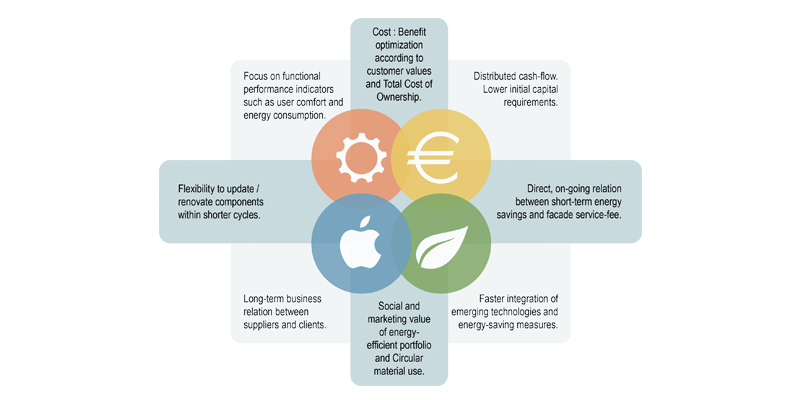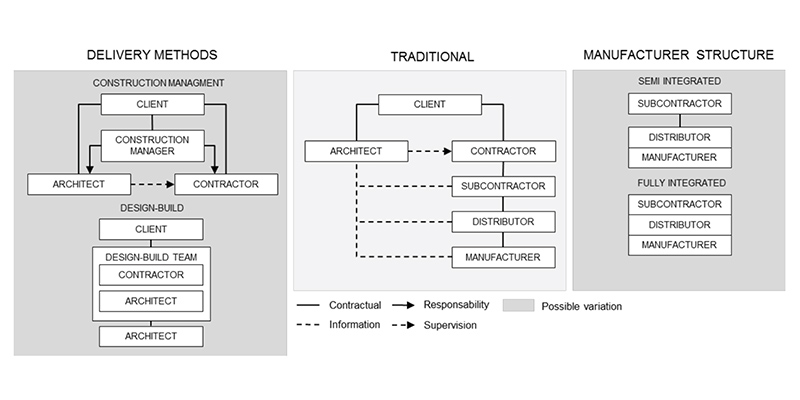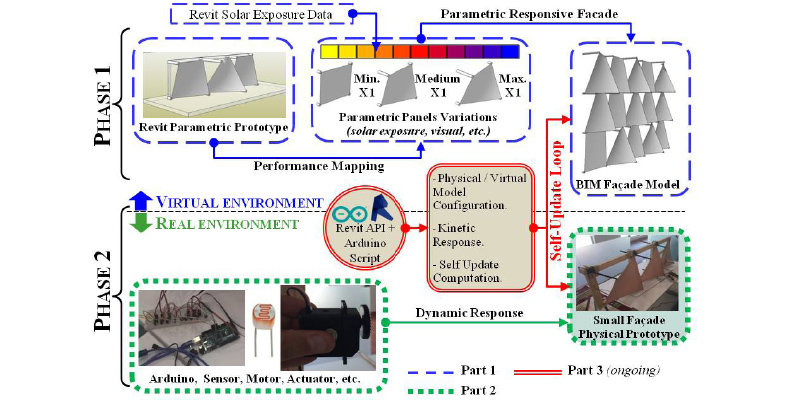Articles
-
This article explores thermal, energy and daylighting performance of double skin facades (DSFs) in different climate types, specifically focusing on three typologies: box window, corridor and multi-story DSFs. These systems were investigated and analyzed to determine how different DSFs perform in comparison to each other, as well as a typical curtain wall (single skin glazed facade used as a baseline), in a multitude of climate applications. The utilized research methods included two-dimensional heat transfer analysis (Finite Element Method analysis), Computational Fluid Dynamics...
-
The Circular Economy (CE) attempts to realign business incentives, across all fields of human industry, to support the preservation of raw materials within closed economic loops. Within this conceptual frame, Product-Service Systems (PSS) combine the use of tangible products such as building technologies, with intangible maintenance and monitoring services, to enhance the delivery of valuable performances while limiting the use of materials and other resources. This paper explores the potential for the application of CE and PSS organization principles in the delivery of...
-
A concept for a smart material morphing building surface tile that would utilize adaptive surface wrinkle patterns to improve solar interaction is explored. The effect of the wrinkle patterns is numerically investigated in the context of an objective to reduce solar irradiance entering buildings by changing the shape of the surface (i.e., surface topography) so that the facade is self-shading, thereby reducing energy costs of the building for temperature control. A generally applicable algorithm was utilized and is presented to quantify the area of an arbitrarily shaped/oriented surface...
-
Designing the facade of a building is a complex task due to the multiple criteria to consider and the number of stakeholders involved. This paper highlights the influence criteria, the requirement and the issues relative to the selection of cladding material for non-residential buildings. Architects, contractors, subcontractors and clients provide a systemic view of the situation, based on an analysis of the findings from a mixed-research method combining online survey and semi-structured interviews. The results show that the decision for the cladding material is mainly influenced by...
-
Architectural facades throughout the history have been designed to respond to environmental, social and functional conditions among other considerations. Advancements in Digital Design Computation (DDC) emerged as an essential support for exploring and creating contemporary architectural facades. Current research attempts seeking responsive kinetic facade revealed different methods of integrating kinetics into the physical facade. However, some case studies indicated that physical façades struggled to achieve the anticipated kinetic responses after a facade is...
-
Recent developments in façade engineering allow for much more freedom in designing façade grids, including various tessellations. This paper reviews different geometrical configurations in order to provide a framework for the understanding and classification of façades based on oblique grids. On the basis of case studies, this paper analyses oblique grids used in planar light-transmitting façades and evaluates existing geometries. The main difficulties linked to edge panels are: (i) the high number of unique panels and (ii) their irregular shape, which complicates the building process....






